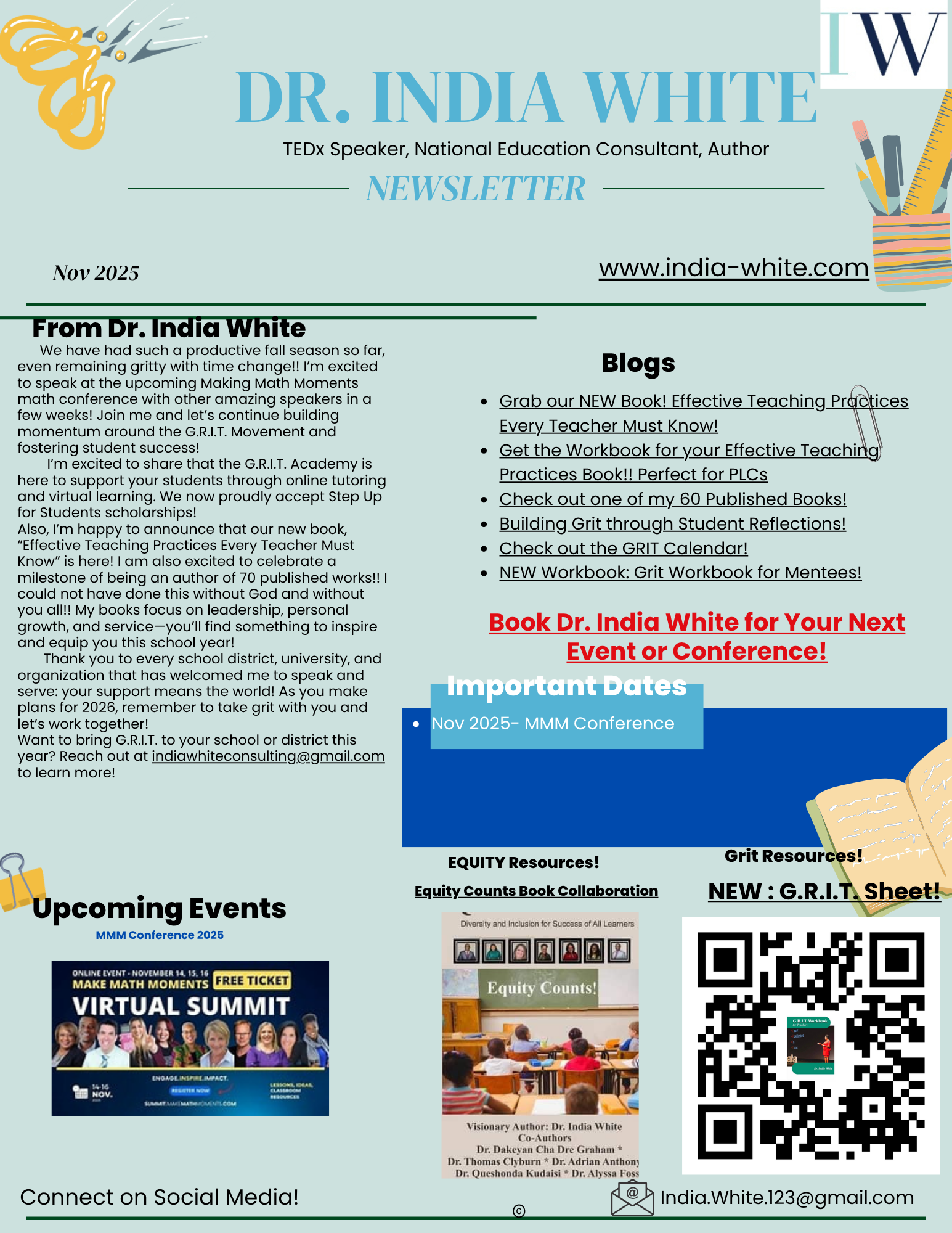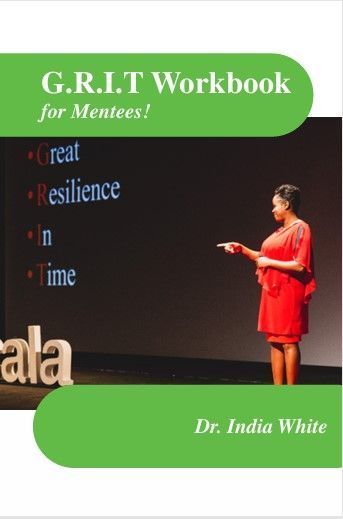Helping Socially Avoidant Learners Connect with Others in the Math Classroom through Socio-Emotional Learning!
India White • July 2, 2023
Helping Socially Avoidant Learners Connect in Math through SEL!

Helping Socially Avoidant Learners Connect with Others through SEL in the Math Classroom
Sometimes, it’s easy to assume that all students are eager to approach learning math and can’t wait to enter into the classroom. However, we forget to factor in the little things including various personalities and learning styles of our students. Once we consider various traits of our learners, we will realize that math class can be a challenging environment for students who are socially avoidant. Students of this personality type might struggle to engage in class discussions, work collaboratively with peers, or seek help from their teacher. Further, they might feel like disappearing into the wall or running out of the classroom when asked to solve a math problem. However, with the right approach, you can help these students overcome their anxiety and develop social emotional skills
that will benefit them both in and out of the classroom.
Here are eight tips for helping socially avoidant students engage in math class and overcome anxiety through social emotional learning.
1. Create a Safe and Supportive Environment
The number one concern of socially avoidant students is being convinced that the learning environment is a place where they are safe and where they have control.
Hence, creating a safe and supportive environment is essential for helping socially avoidant students feel comfortable in math class. Make sure that your classroom is a welcoming space where all students feel valued and know that they are respected by others. Encourage students to share their thoughts and ideas without fear of judgment or criticism. Make sure that you use a “velvet glove” approach with these students so that they don’t retreat into their “shell” out of fear of embarrassment. They have to feel like they are “calling the shots”, or else they may shut down.
2. Use Icebreakers and Team-Building Activities
When working with socially avoidant learners, sometimes it can become socially awkward really quick, and remain that way throughout the lesson unless there’s a strategy to help break the ice. Hence, using icebreakers and team-building activities can help students get to know each other and build trust.
Once a student is able to sense that it’s okay to share out, or contribute, they will feel less threatened and will be motivated to use their student voice to contribute to the lesson. Hence, choose to use icebreaker activities at the beginning of class during bell work and throughout the school year when introducing new topics to help students feel more comfortable working with their peers.
3. Incorporate Social Emotional Learning into Math Lessons
Incorporating social emotional learning strategies into math lessons
can help students develop the skills they need to succeed in both math and social situations. Not only will it help students connect with each other; it will give them awareness on how they are coming across to others socially, in conversation and in their overall behavior. Incorporating SEL strategies will help students own their actions and contribute to responsible decision making, relationship building, social awareness and self-awareness. This will strengthen the whole child and their learning experiences. Hence, choose to teach your students how to manage their emotions, communicate effectively, and work collaboratively with others. Establishing norms for conversation during instructional delivery and mathematical discourse can assist you as you prepare the learning environment and implement SEL strategies.
4. Provide Opportunities for Individual Work
Sometimes, socially avoidant learners need a “breather”. Providing opportunities for individual work can help socially avoidant students feel more comfortable in math class. Further, independent thinking helps strengthen student's ability to think independently during math discussion. Allow your students the opportunity to work independently on assignments and provide one-on-one support when needed. Look for cues from your socially avoidant students where they signal to you that they need a break or are annoyed. Be willing to work on their terms as you continue to build trust and support for them.
5. Encourage Peer Tutoring
Encouraging peer tutoring
can help socially avoidant students build relationships with their peers and develop their math skills. Pair students with different skill levels of learners within the class and encourage them to work together to solve problems. Make sure that when pairing students for peer tutoring that you are using students who are mature and sensitive enough to scaffold and support rather than offend your socially avoidant learners. Peer tutoring will be great success once you are convinced that all students involved are comfortable working with each other and are comfortable working at the pace given. Since socially avoidant students prefer to be left alone, check on them from a distance unless they are raising their hand or signaling for more support via a raised hand or other methods.
6. Use Visual Aids and Manipulatives
Socially avoidant learners aren’t eager to share out but might not mind using manipulatives to express their thinking. Hence, using visual aids and manipulatives can help students understand math concepts and engage in class discussions.
Encourage students to use these tools to explain their thinking with their peers and share their ideas with the class in a way they are comfortable with. When presenting manipulatives or visual aids, allow the socially avoidant learner to take charge and use the tools they feel are best fit for them.
7. Provide Positive Feedback
Providing positive feedback can help socially avoidant students feel more confident in their math abilities. Acknowledge their efforts and progress and provide specific feedback on areas where they can improve. When providing positive feedback, make sure you get permission from your socially avoidant student first before drawing attention to them whole class. A great method would be to first approach them and have a side conversation with them at their desk or away from others as you inform them of your feedback. If they are comfortable, you can ask them if it would be okay to compliment them in front of their peers. If they aren’t comfortable, just provide the feedback and encourage them to keep up the great work.
8. Encourage Self-Reflection
Socially avoidant students love to self-reflect. However, sometimes they can be their worst critic. Hence, encourage your students to self-reflect but to remain optimistic
in their thoughts. Encouraging self-reflection can help students develop self-awareness and identify areas where they need to improve. Provide opportunities for students to reflect on their math skills and social emotional skills and encourage them to set goals towards improving their overall ability in your class.
Conclusion
Socially avoidant learners deserve to learn in an environment conducive for their personality and preferences. Hence, you as the educator have the power to equip your socially avoidant learner with success through these eight tips provided. As you create a safe and supportive environment, use team-building activities, incorporate SEL strategies, provide opportunities for individual work, encourage peer tutoring, use manipulatives, provide positive feedback, and encourage self-reflection, socially avoidant learners will be able to produce and perform to levels of proficiency beyond expectation.

Title: Staying Gritty While Staying Well — 10 Essential Tips for Teachers, Principals, and Leaders By Dr. India White Every educator and leader carries a story marked by perseverance, sacrifice, and determination. Whether you’re guiding a kindergarten classroom, leading a school, or shaping district-wide decisions, you are required to show up daily with strength and consistency. Today’s professionals face growing demands, shifting expectations, and intensified pressures. Yet, in the midst of these challenges, educators continue to push forward with grit. But thriving in this vocation requires more than effort. It requires a marriage of grit and self-care. The G.R.I.T. Framework—Growth Mindset, Resilience, Self-Efficacy, and Time Management—offers a roadmap for teaching and leading with excellence while preserving emotional and spiritual well-being. Below are ten essential tips, enriched by research and practical application, to help you maintain grit while safeguarding your health. 1. Embrace a Growth Mindset Dr. Carol Dweck’s foundational research shows that educators who adopt a growth mindset exhibit higher motivation, stronger performance, and greater resilience when navigating challenges (Dweck, 2006). A growth mindset encourages educators to view setbacks not as failures, but as learning opportunities. When teachers and leaders shift their thinking in this way, they develop adaptability and emotional strength. This perspective reduces anxiety by reframing obstacles as steps toward mastery rather than indicators of inadequacy. In turn, this empowers educators to remain hopeful and open to new solutions, even during seasons of uncertainty. 2. Practice Micro-Resilience Daily Reivich and Shatté (2002) define micro-resilience as the small, intentional behaviors that strengthen our ability to bounce back from adversity. These everyday actions might seem insignificant, but research shows that consistent micro-interventions reduce stress and increase psychological stamina over time. Educators can practice micro-resilience by taking short reflective breaks, resetting between transitions, or engaging in calming breathing exercises. These strategies interrupt the stress cycle and help prevent emotional overload. By incorporating micro-resilience into daily routines, leaders strengthen their long-term grit while maintaining emotional balance. 3. Build Self-Efficacy Through Small Wins Albert Bandura’s work on self-efficacy demonstrates that belief in one’s capability significantly influences motivation, performance, and resilience (Bandura, 1997). Teachers and principals who recognize and celebrate small victories reinforce their sense of competence. These wins, no matter how minor, build internal momentum and enhance confidence. When educators track or verbalize progress, they strengthen the neural pathways associated with persistence. As a result, they are more likely to approach future challenges with optimism and determination. 4. Set Healthy Boundaries Angela Duckworth’s research highlights that grit is not about working endlessly, but about sustaining long-term passion and perseverance (Duckworth, 2016). To sustain grit, educators must create boundaries that protect their emotional and physical capacity. Setting healthy boundaries involves defining what tasks deserve your time, communicating needs clearly, and resisting the pressure to overextend. Leaders who practice boundary-setting demonstrate clarity, emotional intelligence, and responsible stewardship of their energy. By doing so, they model healthy work practices for their teams and prevent burnout. 5. Protect Time With Strategic Scheduling Time management is not merely a productivity strategy—it is an essential aspect of well-being. Research shows that effective time management reduces stress, improves decision-making, and enhances overall job satisfaction (Macan et al., 1990). Educators benefit from establishing routines that allow for focused work while making space for mental and emotional rest. Techniques such as time blocking, delegation, and prioritizing high-impact tasks create structure and reduce decision fatigue. When teachers and leaders guard their schedules with intention, they create an environment where purposeful work can thrive. 6. Cultivate a Supportive Community A supportive professional community is one of the most powerful predictors of educator well-being. Studies show that educators who feel supported by colleagues experience lower burnout rates and higher job satisfaction (Skaalvik & Skaalvik, 2010). Community fosters meaningful collaboration, emotional encouragement, and shared problem-solving. When principals and teachers rely on supportive networks, they build collective resilience that strengthens their ability to manage adversity. Investing in community is not an optional supplement—it is a critical component of long-term grit. 7. Engage in Reflective Practice Donald Schön’s research on reflective practice emphasizes that leaders who reflect consistently make more thoughtful decisions and respond more effectively to complex challenges (Schön, 1983). Reflection provides a mental framework for processing emotions, evaluating decisions, and learning from experience. Through journaling, prayer, or conversation with trusted colleagues, educators gain clarity and renewed strength. Reflection also helps identify patterns that may require adjustment, reducing repeated stress. By creating space for intentional reflection, educators deepen their capacity for resilience and long-term success. 8. Reconnect With Your “Why” Purpose is a powerful motivator that fuels grit. Research shows that individuals who connect with their core purpose are more likely to persist through obstacles and recover more quickly from setbacks (Seligman, 2011). For educators, this purpose might be a passion for student growth, a commitment to equity, or a desire to lead transformative change. When teachers and leaders revisit the moments that inspired their calling, they reinforce their emotional and motivational foundation. Purpose-driven educators remain anchored even when external circumstances shift. 9. Prioritize Well-Being Practices Studies consistently show that educators who engage in intentional well-being practices experience lower levels of stress and greater professional longevity (Jennings & Greenberg, 2009). Self-care is not indulgent—it is an investment in your ability to lead effectively. Incorporating spiritual reflection, exercise, rest, and emotional wellness activities enhances performance and protects mental health. These practices restore the mind and spirit, helping educators respond to challenges with calmness and clarity. By prioritizing wellness, teachers and principals can sustain grit without sacrificing their well-being. 10. Give Yourself Grace Self-compassion is strongly linked to resilience, motivation, and mental well-being (Neff, 2003). Grace allows educators to release perfectionism and acknowledge their humanity. When leaders treat themselves with kindness rather than judgment, they create space for growth and recovery. Grace fuels perseverance by allowing room for mistakes and fresh starts. In giving yourself grace, you strengthen your ability to push through obstacles without internalizing unnecessary stress. A Final Word of Hope To every teacher, principal, and leader reading this: you are seen, valued, and deeply appreciated. The challenges you face do not diminish your worth or your impact. You are making a difference every day, even when the results are not immediately visible. Remember that grit and self-care are not opposites—they are partners. With the right strategies, support, and boundaries, you can continue to thrive and lead with courage. Better days are ahead, and you have everything you need to navigate this season with strength and purpose. If you would like support in building grit within your school, district, or organization, I would love to connect with you. Visit www.india-white.com to explore speaking opportunities, coaching, workshops, books, Grit Trainings, and more. References Bandura, A. (1997). Self-efficacy: The exercise of control. Duckworth, A. (2016). Grit: The power of passion and perseverance. Dweck, C. (2006). Mindset: The new psychology of success. Jennings, P., & Greenberg, M. (2009). Prosocial classroom: Teacher social and emotional competence in relation to student and classroom outcomes. Macan, T. H., Shahani, C., Dipboye, R. L., & Phillips, A. P. (1990). College students' time management: Correlations with academic performance and stress. Neff, K. (2003). Self-compassion: An alternative conceptualization of a healthy attitude toward oneself. Reivich, K., & Shatté, A. (2002). The resilience factor. Schön, D. A. (1983). The reflective practitioner. Seligman, M. (2011). Flourish. Skaalvik, E., & Skaalvik, S. (2010). Teacher burnout and job satisfaction.

Thriving Through G.R.I.T. During the Holidays As the holiday season approaches, teachers can thrive by intentionally leaning into G.R.I.T.—Growth Mindset, Resilience, Self-Efficacy, and Time Management. This season often brings excitement but also fatigue, shifting schedules, and emotional demands. Embracing a Growth Mindset reminds teachers that progress—not perfection—is the goal, while Resilience helps them bounce back from daily challenges with grace. Strengthening Self-Efficacy empowers educators to trust their abilities and celebrate the meaningful wins happening in their classrooms each day. By practicing purposeful Time Management, teachers can protect their energy, set healthy boundaries, and create space for rest and joy. Thriving through G.R.I.T. allows educators to remain grounded, present, and empowered—ensuring they finish the semester strong while caring for themselves in the process. The holiday season brings joy—but also stress, expectations, emotional triggers, and exhaustion. Thriving through the holidays requires intentional grit: choosing growth, calm, and perseverance when everything around you feels rushed or overwhelming. Here’s how to lean into the G.R.I.T. Framework and maintain peace, productivity, and purpose. 1. Growth Mindset: Embrace Imperfect Progress * Allow room for changes in plans—weather, finances, or family dynamics may shift. * Don’t expect perfection; expect adaptation. * Remember that every challenge helps you grow in patience, flexibility, and self-awareness. * Reframe struggles as learning moments: “What is this teaching me?” Holiday Growth Mindset Affirmation: I release perfection and embrace progress, presence, and purpose.” 2. Resilience: Bounce Back With Grace When conflicts arise, pause before reacting. Practice your “resilience reset” (deep breaths, step away, pray, journal). * Protect your emotional boundaries—say no without guilt. * If grief or loneliness feels heavy, honor it. Resilience doesn’t deny pain; it rises through it. * Identify a daily habit that grounds you: morning prayer, gratitude walk, or music therapy. Holiday Resilience Affirmation : “I can rise again. I will not let one moment define my entire season.” 3. Self-Efficacy: Believe in Your Strength and Capability * Celebrate the small wins: the decorations that did get up, the gift you gave, the act of kindness you showed. * Avoid comparing your holiday to others—your journey is unique. * Speak encouraging truths to yourself: * “I am capable.” * “I’ve succeeded before; I can do it again.” * “I deserve rest and joy.” * Make choices that align with your values, not pressure or expectations. Holiday Self-Efficacy Affirmation: “I trust myself. I have what it takes to navigate this season with grace.” 4. Time Management: Protect Your Peace by Planning with Purpose * Create a holiday priority list—focus on what actually matters. * Schedule downtime, not just events. Rest is a strategy, not a luxury. * Set spending boundaries to avoid financial stress. * Use timers for holiday tasks (e.g., cooking, cleaning, shopping) to stay grounded and avoid overwhelm. * Delegate: You don’t have to do everything alone. Holiday Time Management Affirmation: “My time is valuable, and I protect it with wisdom.” Additional G.R.I.T. Tips for the Holiday Season • Practice Gratitude Daily A grateful heart fuels resilience and reduces anxiety. • Stay Connected to Supportive People Reach out to mentors, friends, or faith communities. • Nourish Your Health Sleep, hydrate, enjoy treats in moderation, and give your body movement. • Build a G.R.I.T. Tradition Examples: A family gratitude jar, “kindness day,” or reflection circle. • Pray, Journal, or Meditate Spiritual grounding builds inner calm and clarity. • Give Yourself Permission to Rest You can’t pour from an empty cup—refilling is an act of strength. Closing Encouragement G.R.I.T. isn’t just a framework—it’s a lifestyle. During the holidays, it helps you stay grounded, centered, and purposeful. Whether you’re navigating joy, grief, busy schedules, or family dynamics, remember: You are capable. You are resilient. You can thrive—not just survive—the holiday season. Thriving through G.R.I.T. choose to remain grounded, present, and empowered—ensuring they finish the semester strong while caring for themselves in the process. To learn more about G.R.I.T., explore future opportunities to collaborate, or check out my books and resources for educators, I invite you to visit my website at www.indiawhite.com. .

Making Grit Work at the Making Math Moments Summit: A Recap of a Powerful, Grit-Filled Experience Today, I had the incredible privilege of speaking at the Making Math Moments Summit, and it was truly amazing. From the moment we began, the energy was high, the curiosity was alive, and the commitment to transforming mathematics instruction through grit was stronger than ever. Even when we faced unexpected tech challenges, we modeled exactly what we teach: push through with perseverance, adapt with resilience, and keep moving forward. And yes, we did it with purpose and grit. Our theme for this session was Making Grit Work, and as we dove into the heart of the conversation, it quickly became clear that educators everywhere are hungry for tools that build students’ internal strength, not just their academic skills. Together, we explored what grit looks like in real classrooms, how we can cultivate it intentionally, and why it matters more than ever in today’s educational climate. One of the highlights of our time together was examining NAEP data and discussing how grit intersects with student performance nationwide. We didn’t shy away from the tough questions. We talked about the gaps, the realities, and most importantly, the opportunities. Grit is more than a concept; it is a framework for empowerment, a path toward confidence, and a catalyst for closing achievement gaps. It is the heartbeat of productive struggle. And today, everyone in that virtual room felt it. We also took the Grit Assessment, and that activity added an exciting layer of personal reflection. Educators saw where they personally shine in the pillars of my G.R.I.T. framework: Growth Mindset, Resilience, Self-Efficacy, and Time Management, as well as where they may want to grow further. The chat was full of insights, laughter, and “aha” moments as teachers rated themselves honestly and bravely. It reinforced why this work matters: before we can build grit in our students, we must first understand our own. What I loved most about this session was witnessing educators from all over the world lean in, reflect deeply, and commit to creating classrooms where students don’t just survive math, they rise in it. With every activity, discussion, and shared experience, the Grit Tribe grew bigger and stronger. I left the session inspired, grateful, and fired up for what’s ahead. Thank you to every educator who showed up, engaged, asked questions, and embraced grit with an open mind and open heart. Your dedication to your students and to your own professional growth is what keeps this movement alive. Let’s keep pushing forward, keep believing in ourselves and our students, and keep making grit work in every math moment. Stay gritty, Dr. India White

Attending TEDxOcala 2025: A Full-Circle Moment of Gratitude and Grit Attending TEDxOcala 2025 was nothing short of inspiring. Surrounded by brilliant minds and creative thinkers from across the globe, I was reminded once again of the transformative power of ideas. The event was filled with energy, innovation, and a deep sense of purpose as speakers shared their journeys and insights that challenged, uplifted, and encouraged everyone present to think bigger and live with intention. For me, the experience was also deeply personal. Returning to the stage where I delivered my TEDx talk in 2022 on The Power of G.R.I.T. brought a wave of gratitude and nostalgia. Standing there again, I couldn’t help but reflect on how much growth has happened since that pivotal moment. That talk wasn’t just a speech—it was a testimony to perseverance, resilience, and faith. It was a declaration that through Growth Mindset, Resilience, Self-Efficacy, and Time Management, we can overcome life’s toughest battles and rise into our purpose. Being back at TEDxOcala allowed me to reconnect with fellow visionaries, mentors, and new friends who continue to push the boundaries of what’s possible. It reminded me that we are truly better together. Collaboration and shared wisdom are what make communities thrive. Every person in that room carried a spark that contributed to something greater—an exchange of ideas that can ignite global change. Tips for Getting the Most Out of a TEDx Experience If you’ve ever wanted to attend a TEDx event or are planning to in the future, here are a few ways to make the most of it: 1. Be Present and Open-Minded. Listen with curiosity. Each speaker has a story, and sometimes the message that impacts you the most will come from an unexpected place. 2. Network with Purpose. TEDx events attract incredible people from all walks of life. Take time to connect, share your ideas, and build relationships that can lead to meaningful collaborations. 3. Reflect and Take Notes. Inspiration fades quickly if not captured. Write down key takeaways or quotes that resonate with you. Use them as fuel to inspire your work and personal growth long after the event. 4. Support the Speakers. Engage with them online, share their talks, and spread their messages. A simple act of encouragement can help amplify voices and causes that matter. 5. Apply What You Learn. The power of TEDx lies not just in listening but in doing. Let the ideas you hear challenge you to take action in your community, career, or personal life. How to Be Gritty in Your Career Attending TEDxOcala reminded me once again that grit is the bridge between inspiration and execution. Whether you’re an educator, entrepreneur, leader, or artist, your success depends not just on talent, but on your ability to persist through challenges. * Adopt a Growth Mindset: Believe that your skills and intelligence can be developed through effort and learning. * Build Resilience: View setbacks as opportunities to grow stronger, not reasons to give up. * Strengthen Self-Efficacy: Believe in your own ability to achieve goals—confidence fuels consistency. * Master Time Management: Prioritize purpose-driven actions each day to move closer to your vision. TEDxOcala 2025 was a beautiful reminder that the world changes when people dare to share their stories and embrace the grit it takes to make them real. As I left the event, my heart was full—thankful for the memories of 2022, the inspiration of 2025, and the reminder that we are all part of something much bigger than ourselves. We are better together. To learn more about my work on G.R.I.T. and how you can cultivate growth, resilience, self-efficacy, and time management in your journey, visit www.drindiawhite.com

Join me the week of November 14th as I speak for the Making Math Moments Virtual Conference!! 😃 I am excited to continue offering knowledge and sessions on grit and am open to traveling and working with schools, districts, and organizations as needed. Grit changes lives, and it’s my mission to make sure students and educators alike have the tools to thrive. As we step into this new season, I encourage you to reflect on where grit is showing up in your own life and in your work, and how you can be gritty in the upcoming NEW year. Together, let’s keep cultivating the power of G.R.I.T. in every classroom, community, and home. 😊 I'm here to support you and to work alongside you as we thrive and cultivate grit together. Visit my website www.india-white.com for more information and to see how we can work together 😊 . Link to Newsletter: https://lnkd.in/dpVxmaFp Get Your Spot at the MMM Conference: https://lnkd.in/dbCDkxvj hashtag#drindiawhite hashtag#grit hashtag#tedx hashtag#uf hashtag#savvas hashtag#teachers hashtag#students hashtag#principals hashtag#achievementgap hashtag#makingmathmoments Savvas Learning Company TEDxUniversity of Florida

Woohoo! I'm Super Excited to Launch my Nov. 2025 Newsletter!! 😁 This past month, I had the joy of launching the Grit Workbook for Mentees and doing a book launch with some amazing teachers on our NEW Book and Workbook titled, "Effective Teaching Practices Every Teacher Must Know" 👏 . As a result, I crossed a new milestone of being an author of 70+ published works! 🥰 (excluding math textbooks) and it was nothing short of powerful. Throughout the week, teachers engaged in activities designed to help them understand and apply the G.R.I.T. framework—Growth Mindset, Resilience, Self-Efficacy, and Time Management. 😎 I want to thank each and every one of you for being there with me on this journey as we spread the message of building grit across the nation. 🥰 I can think of several teachers, leaders, and organizations who held my hand through the process and for that I remain forever grateful. By the end of the week, it was clear that these new works have equipped teachers and students for success in life. 😊 Join me the week of November 14th as I speak for the Making Math Moments Virtual Conference!! 😃 I am excited to continue offering knowledge and sessions on grit and am open to traveling and working with schools, districts, and organizations as needed. Grit changes lives, and it’s my mission to make sure students and educators alike have the tools to thrive. As we step into this new season, I encourage you to reflect on where grit is showing up in your own life and in your work, and how you can be gritty in the upcoming NEW year. Together, let’s keep cultivating the power of G.R.I.T. in every classroom, community, and home. 😊 I'm here to support you and to work alongside you as we thrive and cultivate grit together. Visit my website www.india-white.com for more information and to see how we can work together 😊 . Link to Newsletter: https://lnkd.in/dpVxmaFp Get Your Spot at the MMM Conference: https://lnkd.in/dbCDkxvj hashtag#drindiawhite hashtag#grit hashtag#tedx hashtag#uf hashtag#savvas hashtag#teachers hashtag#students hashtag#principals hashtag#achievementgap hashtag#makingmathmoments Savvas Learning Company TEDxUniversity of Florida

New Book Launch: The G.R.I.T. Prayer Guide for Apostolic Believers — Now Available on Amazon I’m thrilled to announce the release of my newest devotional, The G.R.I.T. Prayer Guide for Apostolic Believers, now available on Amazon. Order your copy here: https://www.amazon.com/dp/B0FXS7FZSY?ref_=pe_93986420_774957520 This 365-day devotional and prayer journal was written for Apostolic believers who are striving to live a holy, Spirit-led life while growing in perseverance, prayer, and power. Built upon the biblical foundation of Acts 2:38-39; Acts 2:42, this guide invites you to strengthen your walk with God by developing daily habits of prayer, reflection, and spiritual growth. The G.R.I.T. Prayer Guide for Apostolic Believers is more than a journal—it’s a spiritual journey designed to help you build G.R.I.T., which stands for: * Growth Mindset – Renew your mind daily through the Word, embracing God’s promises with faith and expectation. * Resilience – Stand strong in the Apostolic faith, enduring trials with steadfastness and joy in the Holy Ghost. * Self-Efficacy – Believe that through the Spirit, you can live victoriously, walking in righteousness and truth. * Time Management – Dedicate daily time to prayer, fasting, worship, and studying the Scriptures to stay spiritually disciplined. This prayer guide empowers Pentecostal and Apostolic believers to pursue holiness and purpose. Each day includes space for prayer, reflection, and gratitude— helping you cultivate a lifestyle of devotion that keeps your heart fixed on God. Whether you are new to the faith or a seasoned believer, this devotional is a valuable resource to help you stay anchored in God’s Word, develop endurance, and walk boldly in Apostolic identity. As you journey through the year, you will find yourself strengthened by Scripture, renewed in purpose, and ignited with spiritual fire. Just as I shared in my TEDx Talk, “The Power of G.R.I.T.,” this guide reminds us that G.R.I.T. means Great Resilience In Time. Through prayer and daily devotion, Apostolic believers can develop the spiritual resilience needed to withstand the storms of life while staying faithful to the Lord’s calling. Use this devotional as part of your morning or evening prayer routine, during fasting seasons, or in group study with fellow believers. Let it become a tool that draws you deeper into the presence of God and helps you grow in both discipline and anointing. Order Your Copy Today The G.R.I.T. Prayer Guide for Apostolic Believers is now available on Amazon at: https://www.amazon.com/dp/B0FXS7FZSY?ref_=pe_93986420_774957520 May this guide strengthen your walk with God, deepen your prayer life, and help you live with Great Resilience In Time—for His glory. For ministry connections, speaking engagements, or more G.R.I.T. resources, visit me at www.india-white.com. Grab Your Copy from Amazon Today!

New Book Launch: The G.R.I.T. Journal for Apostolic Believers — A 365-Day Journey of Prayer, Power, and Purpose I am overjoyed to announce the release of my newest devotional resource, The G.R.I.T. Journal for Apostolic Believers! This powerful 365-day journal was prayerfully designed to help Apostolic Christians strengthen their walk with God through daily devotion, reflection, and intentional growth in holiness. In a world filled with distractions and compromise, Apostolic believers are called to stand firm in truth and righteousness. This journal serves as a spiritual companion to help you cultivate a life that is rooted in the Apostles’ doctrine, empowered by the Holy Ghost, and aligned with God’s will. The G.R.I.T. Framework —Growth Mindset, Resilience, Self-Efficacy, and Time Management —provides a faith-based structure for spiritual discipline and endurance. As you journey through the pages, you will be inspired to: * Grow daily in your knowledge of the Word, prayer, and Apostolic doctrine. * Develop Resilience to remain steadfast in your faith, even when faced with trials or opposition. * Strengthen Self-Efficacy, trusting that through the Holy Ghost you have the power to live a victorious life. * Manage Your Time with intention, dedicating each day to prayer, worship, fasting, and service for the Lord. This journal is built on the foundation of **Acts 2:42**, where the early church “continued steadfastly in the apostles’ doctrine and fellowship, and in breaking of bread, and in prayers.” Each page encourages you to take time daily to seek God’s presence, apply Scripture, and live a life that pleases Him. The G.R.I.T. Journal for Apostolic Believers promotes Pentecostal holiness living—separation from the world, consecration unto God, and a heart committed to righteousness. Through daily reflections, prayer journaling, and gratitude writing, you will draw closer to Jesus and be reminded of your purpose as a vessel for His glory. This journal can be used as part of your daily devotion, during morning prayer, in fasting seasons, or alongside Bible study. It is a tool to help you remain spiritually grounded and encouraged as you strive to walk in the Spirit and fulfill God’s calling on your life. Use it to: * Record your daily prayers, Scriptures, and answered petitions. * Reflect on how God is molding your character and faith. * Strengthen your spiritual focus through intentional journaling. * Prepare your heart for revival and continual renewal in the Holy Ghost. The G.R.I.T. Journal for Apostolic Believers was inspired by the same message I shared in my TEDx Talk, “The Power of G.R.I.T.”—which stands for Great Resilience In Time. For the Apostolic believer, this resilience is found in living for Christ daily, enduring trials with joy, and pressing toward the mark of the high calling of God in Christ Jesus. Order Your Copy Today The G.R.I.T. Journal for Apostolic Believers is now available on Amazon: Paperback copy! Whether you are a minister, prayer warrior, youth leader, or believer striving to please the Lord, this devotional will help you stay rooted in Apostolic truth and live a life that honors God in every thought, word, and deed. About the Author Dr. India White is a national speaker, educator, and author who passionately empowers believers to develop Great Resilience In Time through faith and spiritual discipline. As a baptized, Spirit-filled believer who lives by the Apostolic doctrine, she is dedicated to helping others grow in holiness, faith, and purpose. Through her ministry and her G.R.I.T. Framework, she equips the body of Christ to endure with strength, walk in integrity, and live a life of consecration to the Lord. To learn more or invite Dr. White to your church, conference, or women’s ministry event, visit [www.india-white.com]

New Book Launch: The G.R.I.T. Prayer Journal — A 365-Day Devotional Journey of Faith and Perseverance I am beyond excited to announce the launch of my newest book, The G.R.I.T. Prayer Journal: A 365-Day Devotional Journey! This journal was created to help believers strengthen their relationship with God, build spiritual endurance, and live with purpose every single day. The G.R.I.T. Prayer Journal is more than just a devotional—it’s a transformational journey designed to help you develop G.R.I.T., which stands for Growth Mindset, Resilience, Self-Efficacy, and Time Management. These four pillars are essential not only for success in life but also for spiritual maturity. As you walk through each day of this 365-day devotional, you’ll be encouraged to: * Grow in your faith and mindset by applying God’s Word to daily life. * Build Resilience by trusting God’s promises during times of struggle and uncertainty. * Develop Self-Efficacy, believing that you can do all things through Christ who strengthens you. * Manage Your Time Wisely, creating space each day to pray, reflect, and renew your spirit. This journal was born out of my own experiences with perseverance—the same message I shared in my TEDx Talk, “The Power of G.R.I.T.” In that talk, I reminded the world that G.R.I.T. stands for Great Resilience In Time—the ability to endure, overcome, and rise stronger through every challenge life presents. The same faith and determination that carried me through seasons of difficulty have been woven into the pages of this devotional. Every page of The G.R.I.T. Prayer Journal invites you to reflect on Scripture, record your prayers, and recognize how God is moving in your life. It’s designed for believers who want to deepen their walk with God, grow in faith, and live each day with hope and purpose. Whether you are just starting your faith journey or have been walking with the Lord for years, this devotional will help you remain steadfast, prayerful, and full of grace. Order Your Copy Today The G.R.I.T. Prayer Journal is now available on Amazon today! Paperback For speaking engagements, ministry collaborations, or to learn more about my G.R.I.T. Framework and resources, please visit my website or contact me directly. About the Author Dr. India White is a national speaker, educator, author, and TEDx presenter known for her inspiring message of perseverance and faith. As the founder of G.R.I.T. Academy, she empowers students, leaders, and believers to grow through challenges and build lasting resilience.

# The Power of Grit in Mentoring: A Leader’s Playbook for Building Perseverance, Confidence, and Achievement Mentoring changes lives when it moves beyond encouragement and becomes a disciplined, relationship-centered system for **building grit**—the daily habits of perseverance that help mentees finish what they start, grow through setbacks, and become resilient, self-directed learners. In my **G.R.I.T. Framework**—**Growth Mindset, Resilience, Self-Efficacy, and Time Management**—mentors learn to coach behaviors and beliefs that compound over time. This blog synthesizes what research says about grit and mentoring, translates those findings into practical tools for mentors, and shows leaders how to implement a high-fidelity mentoring model in schools, districts, churches, nonprofits, and teams. It also points to resources in my **GRIT Workbooks** and **GRIT Trainings**, and it connects with principles from my **TEDx talk, “The Power of Grit.”** Leaders: share this with your mentor corps. Every section below includes specific actions and measurable indicators you can put to work right away. --- ## Why Grit Matters in Mentoring (What the Evidence Actually Shows) Across multiple contexts, grit—defined as “perseverance and passion for long-term goals”—predicts meaningful differences in success. In seminal studies, grit accounted for about **4% of the variance** in outcomes such as Ivy League GPA, **West Point** retention, educational attainment, and **National Spelling Bee** rankings (Duckworth 2007). Importantly, follow-up research at West Point shows that **both** initial fitness and grit significantly predict **four-year retention** through graduation, underscoring that noncognitive traits and tangible preparation work together (Wetzler et al. 2023). At the same time, the strongest meta-analysis to date urges nuance: the **perseverance-of-effort** facet (showing up and doing the work) tends to carry more predictive weight than the **consistency-of-interests** facet, and grit overlaps with conscientiousness more than early popular narratives suggested (Credé, Tynan, and Harms 2017). For leaders, the takeaway is practical: coach **repeatable effort routines** and **structured practice**, not slogans. Grit connects tightly to other malleable drivers. A national, randomized study of U.S. high schools found a brief **growth-mindset** intervention improved grades **for lower-achieving students** and increased enrollment in advanced math, **when schools provided supportive contexts**—clear work routines, challenge with care, and timely feedback (Yeager et al. 2019). A meta-analysis on mindsets also concluded that average effects are **small overall** but stronger for at-risk learners and when paired with concrete supports (Sisk et al. 2018). This is a crucial design lesson for mentoring: pair belief-shifts with **structure**. Two more pillars round out the picture. **Self-efficacy**—students’ belief in their ability to execute tasks—shows **robust, positive relations** with academic performance and persistence across decades of research (Multon, Brown, and Lent 1991; Artino 2012). And **time management** routines reliably improve engagement, reduce stress, and relate to performance, especially when defined as **specific planning behaviors** (Aeon and Aguinis 2017; Aeon, Faber, and Panaccio 2021). Newer work continues to link time-planning habits to higher study engagement via improved self-control and reduced distraction (Fu et al. 2025). Finally, **mentoring itself works**—and works best when it follows evidence-based practices. Meta-analyses show **modest average effects overall**, with **larger effects** when programs build high-quality relationships, set clear goals, and use structured activities (DuBois et al. 2011; Eby et al. 2008; Raposa et al. 2019). For leaders, that means your implementation fidelity—not just your enthusiasm—determines your impact. --- ## The G.R.I.T. Framework for Mentors (What to Coach and How) **Growth Mindset.** Mentors help mentees interpret effort and struggle as **signals for strategy change**, not signs of incapacity. Replace “I’m not good at this” with “I’m not there **yet**—what’s my next step?” Pair language with specific practice plans, because mindset effects scale **when** learners get structured opportunities to practice and see improvement (Sisk et al. 2018; Yeager et al. 2019). Three to four sentences of encouragement cannot substitute for a calendar of deliberate work. **Resilience.** Reframe setbacks using a two-question reset: **What did I try? What will I try next?** Evidence from competitive contexts shows that gritty performers invest in **deliberate practice**—effortful, targeted repetitions with feedback—even when it’s not enjoyable. In the National Spelling Bee, deliberate solo practice predicted performance better than quizzing or leisure reading, and time in deliberate practice **mediated** the link between grit and outcomes (Duckworth et al. 2010/2011). Mentors should therefore normalize “productive discomfort” and monitor the **dose** of high-quality practice. **Self-Efficacy.** Confidence grows through **mastery experiences**—visible progress on tasks. Mentors should break complex goals into **manageable skills**, track micro-wins, and spotlight progress evidence (“You solved 6/10 correctly last week and 8/10 today after switching strategies”). This is the mechanism by which efficacy fuels persistence and performance (Multon, Brown, and Lent 1991; Artino 2012). **Time Management.** Grit needs a calendar. Adopt a weekly rhythm: two to three **30-minute focus blocks**, a **review/reflect** block, and **micro-deadlines**. The literature shows that when “time management” is treated as specific planning behaviors—rather than a vague trait—benefits are clearer for well-being, engagement, and performance (Aeon and Aguinis 2017; Aeon, Faber, and Panaccio 2021; Fu et al. 2025). --- ## A Six-Step Mentoring Playbook (Leader-Ready and Measurable) **Step 1 — Define one outcome and two behaviors.** Clarify a concrete goal (e.g., “Raise Algebra quiz average from 68% to 78% in four weeks”) and two behaviors that produce it (“Complete three targeted practice sets per week; attend one help session”). Clarity fuels efficacy and execution (Multon, Brown, and Lent 1991). **Step 2 — Build a weekly plan.** Schedule **two focused blocks** and one **review block** on the mentee’s calendar. Treat practice like a rehearsal—non-negotiable and protected. Research suggests that structured planning is the tractable unit of “time management” that mentors can coach consistently (Aeon and Aguinis 2017; Aeon, Faber, and Panaccio 2021). **Step 3 — Practice deliberately.** Use **model → guided reps → independent reps** with tight feedback loops. Keep challenge just above current skill. In high-stakes learning, deliberate practice—not generic repetition—drives the gains that gritty students realize (Duckworth et al. 2010/2011). **Step 4 — Track micro-wins.** Use a single-page tracker: attempts, errors spotted, fixes tried, score trend. Visible progress is the fuel for self-efficacy, and self-efficacy, in turn, sustains persistence (Multon, Brown, and Lent 1991; Artino 2012). **Step 5 — Debrief with AAA: Acknowledge, Analyze, Adjust.** Affirm effort (“You protected your study blocks”), analyze strategy (“What worked?”), then adjust (“Next week: swap one 30-minute block to mornings”). This keeps the relationship warm and the expectations high—two hallmarks of effective mentoring programs (DuBois et al. 2011; Raposa et al. 2019). **Step 6 — Protect the relationship.** Set predictable check-ins and open with a brief relational scan (“High/Low of the week?”). Meta-analytic reviews show that relationship quality magnifies mentoring effects across domains (Eby et al. 2008; Raposa et al. 2019). Leaders should train mentors to balance **care** with **challenge** every week. --- ## Field-Tested Tips Mentors Can Use Tomorrow **Make struggle normal and specific.** Say: *“This is hard because you’re learning. Let’s try a smaller step and track it.”* Then define the step and where it goes on the calendar. This converts a mindset cue into a behavior (Sisk et al. 2018; Yeager et al. 2019). **Coach the dose of practice.** Ask: *“Show me 20 minutes of deliberate reps on the three hardest problem types, then text me your tracker.”* In competitive settings, deliberate practice time is the pathway through which grit shows its effect (Duckworth et al. 2010/2011). **Anchor confidence in evidence.** Prompt: *“Identify one place you improved since last week, and what you changed to get there.”* Efficacy grows when improvement is linked to controllable strategies (Multon, Brown, and Lent 1991; Artino 2012). **Keep time visible.** Mentor: *“Open your planner—where are the two 30-minute blocks this week?”* Mentoring that operationalizes time as scheduled behaviors produces more reliable gains (Aeon and Aguinis 2017; Aeon, Faber, and Panaccio 2021; Fu et al. 2025). --- ## Measuring Impact (So Leaders Can See What’s Working) Build a simple dashboard that blends **outcomes**, **process**, and **beliefs**: * **Outcome metrics:** course grades, attendance, certification steps completed, or project milestones. * **Process metrics:** number of focused study blocks completed; number of deliberate-practice reps; number of mentor feedback cycles per week. * **Belief metrics:** 4-item pulse on growth mindset and self-efficacy (e.g., “I can improve with practice; I know my next step”). Track weekly. Coach **behavioral fidelity** first (Did we do the blocks? the reps? the debriefs?) before adjusting goals. This mirrors what high-impact mentoring programs do at scale—focus on the controllables, then iterate (DuBois et al. 2011; Raposa et al. 2019; Eby et al. 2008). --- ## Implementation Pitfalls Leaders Should Avoid (And What to Do Instead) **Pitfall 1: “Mindset talk” without practice plans.** **Fix:** Pair every encouragement with a **specific, scheduled action**. The strongest studies show mindset affects achievement most when aligned with structure and supportive contexts (Yeager et al. 2019; Sisk et al. 2018). **Pitfall 2: Treating grit as personality, not practice.** **Fix:** Emphasize the **perseverance-of-effort** behaviors. Remember that grit overlaps with conscientiousness and works mainly through consistent, high-quality effort (Credé, Tynan, and Harms 2017). **Pitfall 3: Vague time-management advice.** **Fix:** Define time management as **two to three protected blocks + one review block + micro-deadlines**. Contemporary reviews favor concrete planning over broad platitudes (Aeon and Aguinis 2017; Aeon, Faber, and Panaccio 2021; Fu et al. 2025). **Pitfall 4: Relationship drift.** **Fix:** Train mentors to open with connection, close with commitments, and log each session. Meta-analyses consistently link **relationship quality** to larger effects (Raposa et al. 2019; Eby et al. 2008). --- ## How the GRIT Workbooks and Trainings Support Your Mentoring Program My **GRIT Workbooks** (Students, Educators, and Clergy) provide ready-to-use trackers, reflection prompts, mentor scripts, and weekly planning pages aligned with the **G.R.I.T. Framework**. The tools are designed so mentors can implement the **six-step playbook** immediately and leaders can monitor fidelity with simple checklists. In **GRIT Trainings**, teams practice coaching micro-skills (e.g., moving from praise to evidence-based efficacy), calibrate deliberate-practice tasks in core subjects, and learn to set up dashboards that blend outcomes, process, and belief metrics. I also integrate key moments from my **TEDx talk “The Power of Grit,”** tailoring examples for schools, districts, youth ministries, and community organizations. For details, **visit my website** to explore coaching, keynotes, and full implementation support. --- ## A Final Charge to Leaders Grit is not a slogan; it is a **system**—of beliefs, behaviors, and relationships, repeated weekly, measured carefully, and refined relentlessly. When mentors coach **Growth Mindset** with structure, build **Resilience** through deliberate practice, cultivate **Self-Efficacy** with visible mastery, and protect **Time** on the calendar, mentees don’t merely cope—they **excel**. The research is clear that effects are **real but modest** on average; the magic happens when leaders insist on fidelity to **high-quality routines** and **caring, high-expectations relationships**. Equip your mentors with the GRIT playbook, and watch perseverance, confidence, and achievement rise—one well-planned week at a time. If you want a plug-and-play mentor toolkit, a GRIT keynote, or a customized training and evaluation plan for your organization, reach out. I’d be honored to help your mentors—and mentees—grow strong, finish well, and shine. --- ## References (Chicago Author–Date) Aeon, Brad, and Herman Aguinis. 2017. “It’s About Time: New Perspectives and Insights on Time Management.” *Academy of Management Perspectives* 31 (4): 309–30. [https://doi.org/10.5465/amp.2016.0166](https://doi.org/10.5465/amp.2016.0166). ([Academy of Management Journals][1]) Aeon, Brad, Thomas Faber, and Alexander Panaccio. 2021. “Does Time Management Work? A Meta-Analysis.” *PLOS ONE* 16 (1): e0245066. [https://doi.org/10.1371/journal.pone.0245066](https://doi.org/10.1371/journal.pone.0245066). ([PLOS][2]) Artino, Anthony R., Jr. 2012. “Academic Self-Efficacy: From Educational Theory to Instructional Practice.” *Perspectives on Medical Education* 1 (2): 76–85. [https://doi.org/10.1007/s40037-012-0012-5](https://doi.org/10.1007/s40037-012-0012-5). ([PubMed Central][3]) Credé, Marcus, Michael C. Tynan, and Peter D. Harms. 2017. “Much Ado about Grit: A Meta-Analytic Synthesis of the Grit Literature.” *Journal of Personality and Social Psychology* 113 (3): 492–511. [https://pubmed.ncbi.nlm.nih.gov/27845531/](https://pubmed.ncbi.nlm.nih.gov/27845531/). ([PubMed][4]) DuBois, David L., Nelson Portillo, Jean E. Rhodes, Naida Silverthorn, and Jeffrey C. Valentine. 2011. “How Effective Are Mentoring Programs for Youth? A Systematic Assessment of the Evidence.” *Psychological Science in the Public Interest* 12 (2): 57–91. [https://doi.org/10.1177/1529100611414806](https://doi.org/10.1177/1529100611414806). ([PubMed][5]) Duckworth, Angela L. 2007. “Grit: Perseverance and Passion for Long-Term Goals.” *Journal of Personality and Social Psychology* 92 (6): 1087–1101. [https://pubmed.ncbi.nlm.nih.gov/17547490/](https://pubmed.ncbi.nlm.nih.gov/17547490/). ([PubMed][6]) Duckworth, Angela L., Teri A. Kirby, Eli Tsukayama, Heather Berstein, and K. Anders Ericsson. 2011. “Deliberate Practice Spells Success: Why Grittier Competitors Triumph at the National Spelling Bee.” *Social Psychological and Personality Science* 2 (2): 174–81. [https://doi.org/10.1177/1948550610385872](https://doi.org/10.1177/1948550610385872). ([SAGE Journals][7]) Eby, Lillian T., Tammy D. Allen, Sarah C. Evans, Thomas Ng, and David L. DuBois. 2008. “Does Mentoring Matter? A Multidisciplinary Meta-Analysis Comparing Mentored and Non-Mentored Individuals.” *Journal of Vocational Behavior* 72 (2): 254–67. [https://pmc.ncbi.nlm.nih.gov/articles/PMC2352144/](https://pmc.ncbi.nlm.nih.gov/articles/PMC2352144/). ([PubMed Central][8]) Fu, Yilin, Jiahui Yu, and Shuqin Li. 2025. “Unlocking Academic Success: The Impact of Time Management on College Students’ Study Engagement.” *BMC Psychology* 13 (1): 258. [https://pmc.ncbi.nlm.nih.gov/articles/PMC11967054/](https://pmc.ncbi.nlm.nih.gov/articles/PMC11967054/). ([PubMed Central][9]) Multon, Karen D., Steven D. Brown, and Robert W. Lent. 1991. “Relation of Self-Efficacy Beliefs to Academic Outcomes: A Meta-Analytic Investigation.” *Journal of Counseling Psychology* 38 (1): 30–38. [https://eric.ed.gov/?id=EJ426706](https://eric.ed.gov/?id=EJ426706). ([ERIC][10]) Raposa, Elizabeth B., Jean E. Rhodes, Sarah B. Stams, R. Schwartz, Carla Cardoso, et al. 2019. “The Effects of Youth Mentoring Programs: A Meta-Analysis of Outcome Studies.” *Journal of Youth and Adolescence* 48: 423–43. [https://www.rhodeslab.org/wp-content/uploads/2019/01/Raposa2019_Article_TheEffectsOfYouthMentoringProg.pdf](https://www.rhodeslab.org/wp-content/uploads/2019/01/Raposa2019_Article_TheEffectsOfYouthMentoringProg.pdf). ([rhodeslab.org][11]) Sisk, Victoria F., Alexander P. Burgoyne, Jingze Sun, Jennifer L. Butler, and Brooke N. Macnamara. 2018. “To What Extent and Under Which Circumstances Are Growth Mind-Set Interventions Effective? A Meta-Analysis of the Evidence.” *Psychological Science* 29 (4): 549–71. [https://journals.sagepub.com/doi/10.1177/0956797617739704](https://journals.sagepub.com/doi/10.1177/0956797617739704). ([SAGE Journals][12]) Wetzler, Elisheva L., Max Karstoft, John J. Ratey, Michael J. Matthews, and Yuval Neria. 2023. “Grit and Uncertainty: Grit Predicts Performance and West Point Graduation.” *Scientific Reports* 13: 11707. [https://pmc.ncbi.nlm.nih.gov/articles/PMC11407409/](https://pmc.ncbi.nlm.nih.gov/articles/PMC11407409/). ([PubMed Central][13]) Yeager, David S., Paul Hanselman, Gregory M. Walton, Jared S. Murray, Robert Crosnoe, et al. 2019. “A National Experiment Reveals Where a Growth Mindset Improves Achievement.” *Nature* 573 (7774): 364–69. [https://www.nature.com/articles/s41586-019-1466-y](https://www.nature.com/articles/s41586-019-1466-y). ([Nature][14]) --- *If you’d like this blog converted into a branded PDF, a leader’s one-pager, or a mentor session script packet aligned to the GRIT Workbooks (with trackers, planning pages, and fidelity checklists), say the word and I’ll package it for immediate use.* [1]: https://journals.aom.org/doi/10.5465/amp.2016.0166?utm_source=chatgpt.com "It's About Time: New Perspectives and Insights on ..." [2]: https://journals.plos.org/plosone/article?id=10.1371%2Fjournal.pone.0245066&utm_source=chatgpt.com "Does time management work? A meta-analysis | PLOS One" [3]: https://pmc.ncbi.nlm.nih.gov/articles/PMC3540350/?utm_source=chatgpt.com "Academic self-efficacy: from educational theory to instructional ..." [4]: https://pubmed.ncbi.nlm.nih.gov/27845531/?utm_source=chatgpt.com "Much ado about grit: A meta-analytic synthesis of the grit ..." [5]: https://pubmed.ncbi.nlm.nih.gov/26167708/?utm_source=chatgpt.com "How Effective Are Mentoring Programs for Youth? A ..." [6]: https://pubmed.ncbi.nlm.nih.gov/17547490/?utm_source=chatgpt.com "Grit: perseverance and passion for long-term goals" [7]: https://journals.sagepub.com/doi/10.1177/1948550610385872?utm_source=chatgpt.com "Deliberate Practice Spells Success" [8]: https://pmc.ncbi.nlm.nih.gov/articles/PMC2352144/?utm_source=chatgpt.com "Does Mentoring Matter? A Multidisciplinary Meta-Analysis ..." [9]: https://pmc.ncbi.nlm.nih.gov/articles/PMC11967054/?utm_source=chatgpt.com "Unlocking academic success: the impact of time management ..." [10]: https://eric.ed.gov/?id=EJ426706&utm_source=chatgpt.com "EJ426706 - Relation of Self-Efficacy Beliefs to Academic ..." [11]: https://www.rhodeslab.org/wp-content/uploads/2019/01/Raposa2019_Article_TheEffectsOfYouthMentoringProg.pdf?utm_source=chatgpt.com "The Effects of Youth Mentoring Programs: A Meta-analysis ..." [12]: https://journals.sagepub.com/doi/10.1177/0956797617739704?utm_source=chatgpt.com "To What Extent and Under Which Circumstances Are ..." [13]: https://pmc.ncbi.nlm.nih.gov/articles/PMC11407409/?utm_source=chatgpt.com "Grit and uncertainty: Grit predicts performance and West ..." [14]: https://www.nature.com/articles/s41586-019-1466-y?utm_source=chatgpt.com "A national experiment reveals where a growth mindset ..."